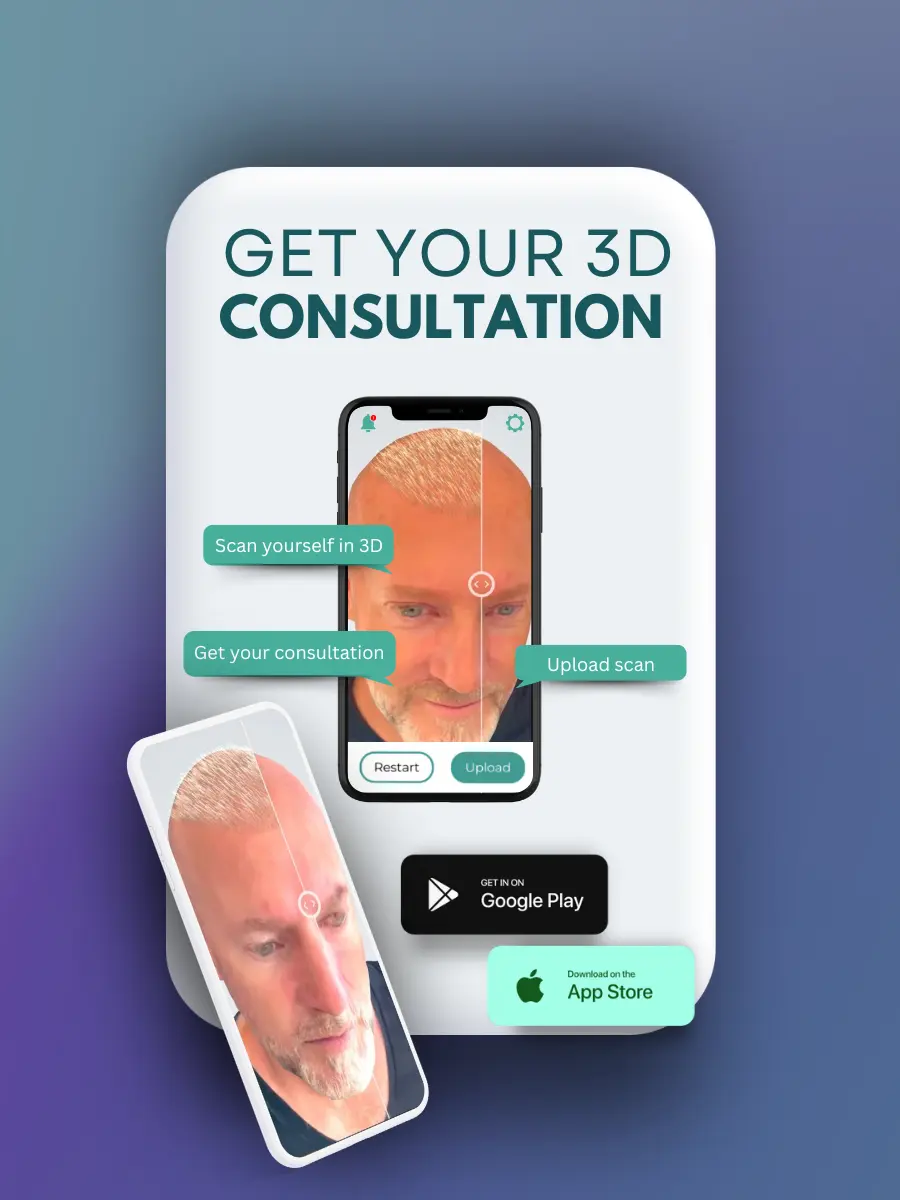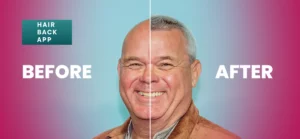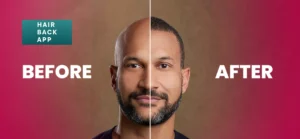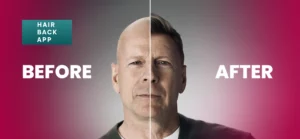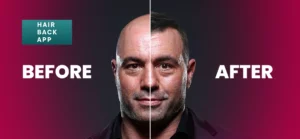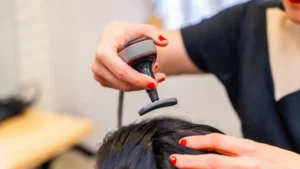What are the cause of hair loss? Great question!
Hair loss, medically known as alopecia, refers to the partial or complete absence of hair from areas where it normally grows. It is a common condition that affects millions of people worldwide, regardless of age, gender, or ethnicity. While hair loss is often perceived as a cosmetic concern, it can have significant psychological and emotional implications for those experiencing it.
My name is Emma Wright, your resident hair loss and hair restoration specialist. This comprehensive guide will explore 11 common causes of hair loss, ranging from genetic factors and hormonal imbalances to medical conditions, lifestyle choices, and environmental factors.
So, what is hair loss?
Hair loss can manifest in various forms, including thinning of the hair, one-sided hair loss, bald patches, or complete loss of hair on the scalp or other parts of the body. It can occur gradually over time or suddenly, depending on the underlying cause. Understanding the mechanisms and factors contributing to hair loss is crucial for effective management and treatment.
Identifying the root cause of hair loss is essential for developing targeted treatment strategies and preventing further hair loss. While some causes of hair loss are temporary and reversible, others may require long-term management or medical intervention.
Moreover, certain underlying health conditions associated with hair loss may require prompt medical attention to prevent complications and improve overall health and well-being. Whether you’re experiencing hair loss yourself or seeking to support a loved one, this guide will serve as a valuable resource for understanding and addressing this prevalent condition.
Let’s look at the 15 causes of hair loss.
11 Causes of Hair Loss
Genetic Factors
Hereditary hair loss can often be traced back to genetic predispositions and hereditary factors. Understanding how genetics influence hair loss is essential for recognizing and managing this common condition effectively.
1. Androgenetic Alopecia (Male and Female Pattern Baldness)
Androgenetic alopecia, commonly known as male pattern baldness in men and female pattern baldness in women, is the most prevalent form of genetic hair loss. This type of alopecia is characterized by a progressive thinning of the hair follicles, leading to a distinct pattern of hair loss. In men, it typically starts with a receding hairline and balding at the crown, while women may experience diffuse thinning throughout the scalp.
Androgenetic alopecia is primarily influenced by the presence of androgens, particularly dihydrotestosterone (DHT), which can bind to receptors in the hair follicles, causing them to shrink and produce thinner, shorter hairs.
While the exact mechanisms underlying this condition are complex and not fully understood, genetic factors play a significant role in determining an individual’s susceptibility to androgenetic alopecia.
2. Family History and Genetic Predisposition
Family history is a crucial determinant of an individual’s risk of developing hair loss. If close relatives, such as parents or siblings, have experienced hair loss, particularly androgenetic alopecia, there is a higher likelihood of inheriting the genetic predisposition for this condition.
Genetic studies have identified several genes associated with hair loss susceptibility, highlighting the hereditary nature of this condition. Understanding one’s family history of hair loss can provide valuable insights into individual risk factors and help guide proactive measures to prevent or manage hair loss effectively.
While genetic predisposition is not entirely modifiable, early intervention and lifestyle modifications can play a significant role in slowing down the progression of hair loss and preserving hair health.
Hormonal Imbalance
Hormones play a crucial role in regulating various physiological processes in the body, including hair growth and maintenance. Imbalances in hormone levels can disrupt the normal hair growth cycle, leading to hair loss. Understanding the impact of hormonal imbalance on hair health is essential for identifying and addressing underlying causes of hair loss.
3. Thyroid Disorders
Thyroid disorders, such as hypothyroidism and hyperthyroidism, can have profound effects on hair growth and hair loss. The thyroid gland produces hormones that regulate metabolism, energy levels, and many other bodily functions.
When the thyroid gland is underactive (hypothyroidism) or overactive (hyperthyroidism), hormone imbalances can occur, disrupting the hair growth cycle. In hypothyroidism, decreased thyroid hormone levels can lead to hair thinning, dryness, and brittleness.
On the other hand, hyperthyroidism, characterized by excessive thyroid hormone production, can accelerate the hair growth cycle, leading to rapid shedding and hair loss. Treating underlying thyroid disorders through medication and lifestyle changes can help restore hormone balance and promote healthy hair growth.
4. Pregnancy and Postpartum Changes
Pregnancy and childbirth are associated with significant hormonal fluctuations that can impact hair growth and hair loss. During pregnancy, elevated levels of estrogen prolong the growth phase of the hair cycle, resulting in thicker, fuller hair. However, after childbirth, estrogen levels plummet, causing many hairs to enter the resting phase simultaneously. This phenomenon, known as telogen effluvium, can lead to excessive shedding and temporary hair loss in the postpartum period.
While postpartum hair loss is a normal and temporary condition, it can be distressing for new mothers. Fortunately, hair typically regrows spontaneously within a few months as hormone levels stabilize. Adequate nutrition, stress management, and gentle hair care practices can support healthy hair growth during this transitional period.
5. Polycystic Ovary Syndrome (PCOS)
Polycystic ovary syndrome (PCOS) is a hormonal disorder characterized by imbalances in sex hormones, such as androgens (e.g., testosterone) and estrogen. Excess androgens in women with PCOS can disrupt the hair growth cycle, leading to symptoms such as hirsutism (excessive body hair) and male-pattern hair loss (androgenetic alopecia).
Managing PCOS involves addressing underlying hormonal imbalances through lifestyle modifications, medications, and hormonal therapies. In some cases, treatments targeting specific symptoms, such as excess hair growth or hair loss, may be recommended to improve quality of life and promote self-confidence.

Medical Conditions
Hair loss can be a symptom of various underlying medical conditions, ranging from autoimmune disorders to infections. Understanding the relationship between these medical conditions and hair loss is essential for proper diagnosis and management.
6. Alopecia Areata
Alopecia areata is an autoimmune disorder characterized by the sudden onset of patchy hair loss, typically on the scalp but can also affect other areas of the body. In individuals with alopecia areata, the immune system mistakenly attacks the hair follicles, leading to hair loss.
The exact cause of alopecia areata is not fully understood, but it is believed to involve a combination of genetic predisposition and environmental triggers. Stress, infections, and certain medications may exacerbate or trigger episodes of hair loss in susceptible individuals.
Treatment options for alopecia areata aim to suppress the autoimmune response and promote hair regrowth. Corticosteroids, topical immunotherapy, and other medications may be prescribed to manage symptoms and stimulate hair follicle activity.
While alopecia areata can be unpredictable and challenging to treat, many individuals experience spontaneous regrowth of hair over time.
7. Scalp Infections
Scalp infections caused by fungi, bacteria, or viruses can disrupt the hair growth cycle and lead to hair loss. Common scalp infections associated with hair loss include fungal infections like ringworm (tinea capitis) and bacterial infections such as folliculitis.
Ringworm is a contagious fungal infection that can cause red, scaly patches on the scalp and hair loss in affected areas. Folliculitis, on the other hand, is an inflammation of the hair follicles often caused by bacterial infection, resulting in small, pus-filled bumps and hair loss.
Treatment of scalp infections typically involves antifungal or antibacterial medications to eliminate the underlying cause and restore hair growth. Proper hygiene practices and avoiding sharing personal items such as combs and hats can help prevent the spread of scalp infections.
8. Autoimmune Diseases
Certain autoimmune diseases, such as lupus, lichen planopilaris, and lichen planus, can affect the skin and hair follicles, leading to hair loss as a secondary symptom. In autoimmune disorders, the immune system mistakenly attacks healthy tissues, including hair follicles, resulting in inflammation and hair loss.
Lupus, for example, is a chronic autoimmune disease that can cause systemic inflammation and affect various organs, including the skin and scalp. Hair loss in lupus patients may present as thinning, patchy hair loss, or scarring alopecia.
Management of autoimmune-related hair loss involves controlling inflammation and immune system activity through medications such as corticosteroids, immunosuppressants, and biologic therapies. In addition to medical treatment, lifestyle modifications, and stress management techniques may help minimize hair loss associated with autoimmune disorders.
Nutritional Deficiencies
Nutrition plays a vital role in maintaining healthy hair growth and preventing hair loss. Deficiencies in essential nutrients can disrupt the hair growth cycle, leading to thinning, brittle hair, and eventual hair loss.
Understanding the impact of nutritional deficiencies on hair health is crucial for identifying and addressing underlying causes of hair loss.
9. Iron Deficiency Anemia
Iron deficiency anemia occurs when the body lacks an adequate supply of iron, a mineral essential for the production of hemoglobin, which carries oxygen to the body’s tissues. Insufficient iron levels can lead to reduced oxygen delivery to the hair follicles, disrupting the hair growth cycle and resulting in hair loss.
Symptoms of iron deficiency anemia may include fatigue, weakness, pale skin, and brittle nails in addition to hair loss. Laboratory tests, such as serum ferritin levels, can help diagnose iron deficiency anemia and guide appropriate treatment.
Treatment of iron deficiency anemia typically involves iron supplementation and dietary modifications to increase iron intake. Consuming iron-rich foods such as lean meats, leafy green vegetables, legumes, and fortified cereals can help replenish iron stores and support healthy hair growth.
10. Protein Deficiency
Proteins are the building blocks of hair, and inadequate protein intake can impair hair growth and lead to hair loss. Protein deficiency can occur due to poor dietary choices, restrictive diets, or underlying health conditions that affect protein absorption and metabolism.
When the body lacks sufficient protein, it may prioritize essential functions over non-essential ones like hair growth, leading to thinning and weak hair strands. In severe cases of protein deficiency, a condition known as telogen effluvium may occur, causing excessive shedding and hair loss.
Increasing protein intake through a balanced diet that includes sources such as lean meats, fish, eggs, dairy products, legumes, nuts, and seeds can help prevent protein deficiency and promote healthy hair growth. In some cases, protein supplements may be recommended to address deficiencies and support hair health.
11. Vitamin Deficiencies (e.g., Vitamin D, Vitamin B12)
Vitamins play a crucial role in maintaining hair health, and deficiencies in certain vitamins can contribute to hair loss. Vitamin D, for example, is essential for hair follicle cycling and may influence hair growth through its effects on the immune system and inflammation.
Vitamin B12 is involved in red blood cell formation and nervous system function, and deficiency can lead to anemia and neurological symptoms, which may indirectly affect hair growth. Additionally, deficiencies in other B vitamins, such as biotin (Vitamin B7), may contribute to hair thinning and hair loss.
Ensuring adequate intake of vitamins through a balanced diet or supplementation can help prevent deficiencies and support healthy hair growth. Foods rich in Vitamin D include fatty fish, fortified dairy products, and sunlight exposure, while Vitamin B12 sources include meat, poultry, fish, dairy products, and fortified cereals.
Conclusion
Hair loss can be a distressing experience, affecting not only one’s physical appearance but also their self-confidence and overall well-being. While understanding the diverse causes of hair loss is crucial for effective management, it’s also essential to explore available treatment options that can help individuals regain a sense of normalcy and confidence in their appearance.
One such option is hair transplantation, a surgical procedure that involves moving hair follicles from one part of the body (the donor site) to the balding or thinning areas (the recipient site). Hair transplants offer a permanent solution to hair loss, restoring natural-looking hair growth and enhancing one’s appearance.
For individuals considering hair transplantation, it’s important to research and choose the best hair transplant clinic that offers high-quality services and optimal outcomes. Reading hair transplant clinic reviews can provide valuable insights into the experiences of past patients and help individuals make informed decisions about which clinic to choose.
By leveraging the experiences and feedback of others through hair transplant clinic reviews, individuals can gain confidence in their choice of clinic and approach their hair restoration journey with greater assurance.
With the advancements in hair transplantation techniques and the expertise of skilled surgeons, individuals can achieve natural-looking results and reclaim their confidence in their appearance.
In conclusion, while hair loss may present challenges, there are effective solutions available, including hair transplantation. By selecting a reputable hair transplant clinic and undergoing a personalized treatment plan, individuals can improve their hair density and regain a sense of self-assurance.

